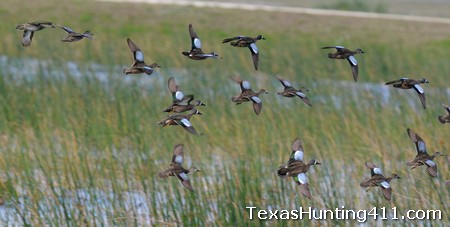Duck Hunting Looks Strong in Texas
It’s September and the first cool fronts will upon us soon, pushing down a wave of blue-winged teal. These small, fast flying ducks are the first to make their way down the Central Flyway each year. Like most waterfowl species, they prefer freshwater, shallow wetlands for feeding. And on the feed is where you should always be when duck hunting anywhere. Find shallow water areas with food and the ducks literally come to you (and that’s exactly the way it should work, right?). If you can’t find it, you can build it.
Source: NORTH-CENTRAL U.S. In May, heavy rainfall improved wetland conditions across large areas of Montana, South Dakota, and North Dakota. Waterfowl nesting efforts are strong, and with improved wetland habitat, brood survival should be enhanced. While habitat loss remains a serious concern, good waterfowl production is expected in this region.

Flooding Fields for Duck Hunting
Field crops offering the most energy for waterfowl include corn, milo and soybeans. However, some grains deteriorate faster than others when flooded. After 90 days of flooding, 86 percent of soybeans, 50 percent of corn and 42 percent of milo is deteriorated. Keep this in mind when flooding fields for duck hunting. After a certain period they become devoid of the good stuff. Milo and corn last longer and produce high energy so they are the fields you should focus on.
To prevent early seed deterioration, fields should not be flooded well in advance of waterfowl arriving. Also, fields should be flooded gradually over a several week period to provide food and habitat over a longer period and helps ensure the food and the hunting do not run out before the duck season is over. Ideally, more than one field should be flooded to provide another crop or to make food available over a longer period.
Flooding larger fields or more of them will attract more waterfowl and can only improve hunting. I understand that this is easier said than done, especially if you do not own the land that you are hunting. Find landowners or farmers that are willing to work with you will be a must if you are not the landowner. Another option that can attract birds and increase duck hunting opportunities is to implement most soil management for a variety of waterfowl species.
There are a lot of ducks that will be headed south soon. Best of luck to all that chase them.